
Volante
Elyse Glickman heads to Oregon’s Willamette Valley, known for its 500 wineries and top-notch food, and found herself drawn to Résonance Estate
Photographed by the author

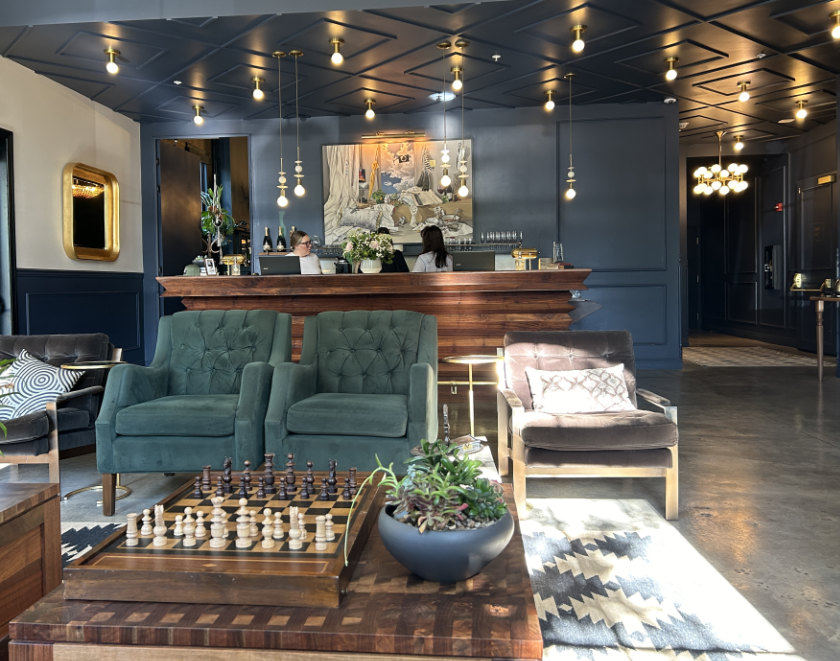
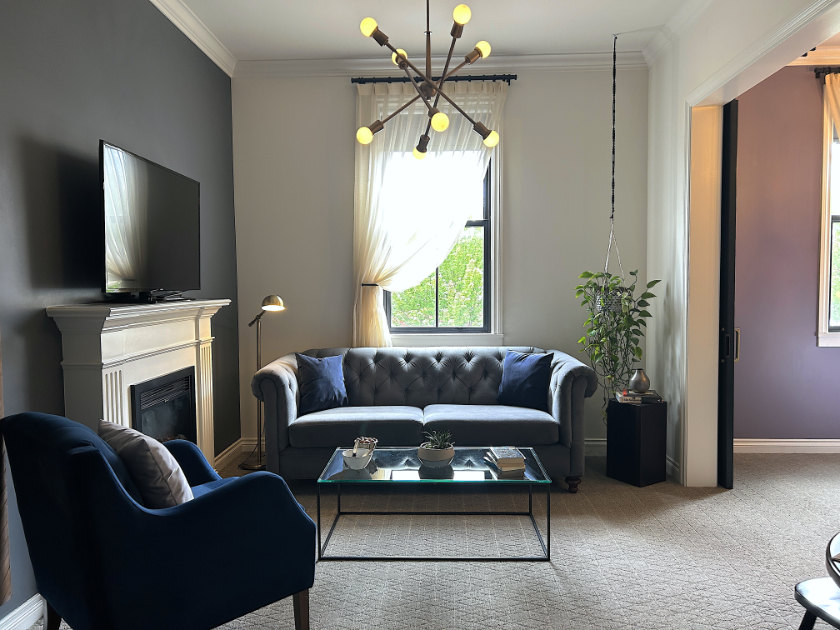
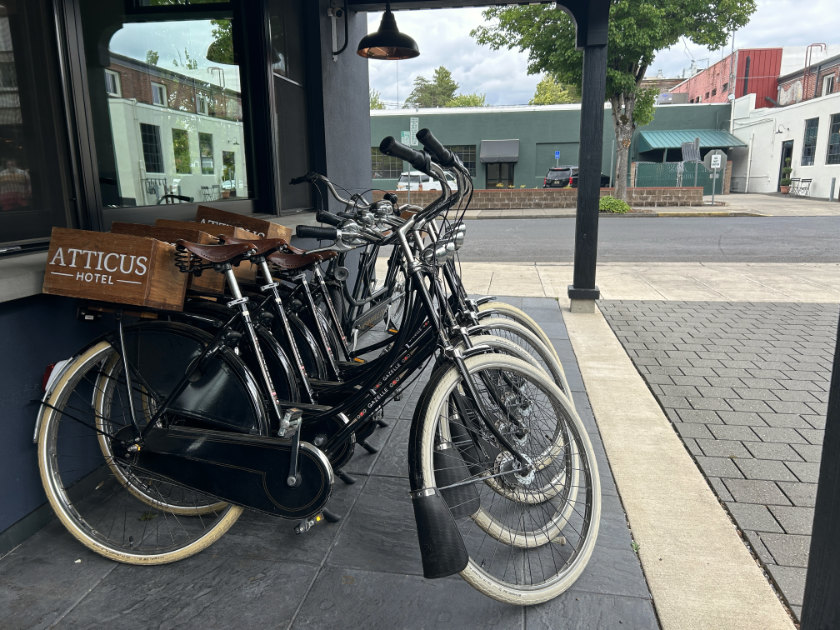

The Atticus Hotel’s lobby previews the good taste of the establishment from the moment you set foot into the lobby. The suite is tastefully decorated. Cypress, inside the Atticus Hotel.
Where the urban environs of Portland end, the Willamette Valley begins. The Willamette River, flanked by the Pacific coast to the west and the Cascade Mountains to the east, runs through a valley that extends 240 km. The river is dotted with acclaimed wineries and towns that abound with restaurants and food emporiums specializing in modern Americana fare as well as folksy–hip farmers’ markets, art galleries, and boutiques. While the picturesque landscapes were millions of years in the making, the region’s wine culture took shape starting in 1965.
In the heart of the region, McMinnville is the ideal spot as a centrally located tour base to take in everything Oregon wine country has to offer. Although it is impossible to hit all 500 Willamette Valley wineries, the downtown area is awash with restaurants and tasting rooms where one can sample expressions of favourite varietals among the approachable-yet-sophisticated chardonnay, pinot gris, riesling, and sauvignon blanc or compare and contrast sips of the award-winning pinot noir wines. The famous trendy–arty culture that defines Portland has also travelled well up the Willamette River and into the art galleries and shops lining the downtown streets (such as the Gallery at Ten Oaks, known for its location in a 1908 Craftsman-style home and pairing what’s on display with local wines) and public art on the streets and in green spaces around town.
The Atticus Hotel, founded by Erin Stephenson and Brian Shea, has the look of a lovingly restored vintage building but was built out of a more modern building to embody the best of the old and new in a “wine country inn” context. The hotel (opened in 2018) is bathed in a rich navy blue and enlivened with an eclectic and urbane interior design æsthetic. Statement pieces from Oregon artisans, Pendleton bathrobes, and bath amenities from Portland’s Maak Labs add up to a stay that’s at once homey and yet a destination into itself. Other perks add to this effect, including complimentary cappuccino and espresso made to order in the lobby, and complimentary use of Dutch bikes.
Its house restaurant, Cypress Mediterranean, steers east of standard-issue wine country creation with its menu of originals and classic recipes with bold influences of Greece and Turkey. Breakfast is the star attraction, with fresh-baked pita accompanying most of the simpler dishes, and signatures like ful mudammas (green garbanzo beans, cumin, garlic, onion, poached egg, fried pita), pomegranate pancakes, shakshuka, and Turkish eggs with yogurt, pepper sauce, and herb salad.
Around the corner from the Atticus, Third Street abounds with outdoorsy clothing and accessories one may expect to find in every wine-country town along the Pacific. Mes Amies, recently taken over by Tayler Brisbin (a graduate of McMinnville’s Linfield University), is beloved by residents and regular visitors for its curated mix of top US boutique fashion brands and made-in-Oregon home goods and accessories.
During the warmer months, the weekly Downtown McMinnville Farmers’ Market provides another way to sample local food, art, and culture against a backdrop of live music and local colour. Its booths showcase the work of local craftspeople along with seasonal produce, home-baked treats, condiments, and more of the best things you never knew you needed (in my case, tile coasters with collages of butterfly images and metallic paint flourishes).
continued below


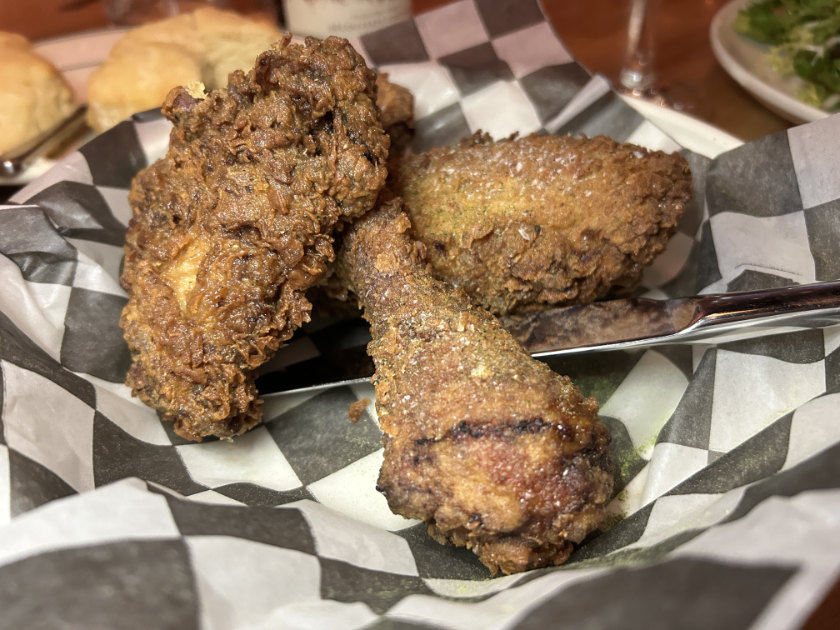
Above, from top:
Produce at the Downtown McMinnville Farmers’ Market. Entrance to the Kitchen at Middleground Farm. Humble Spirit's crowd-pleasing fried chicken dinner.
Those who want to bring Oregon wine country home above and beyond the wines should check out the many classes available at the Kitchen at Middleground Farm. The school, surrounding gardens, and farmland came together as a labour of love by Jessica Hansen, whose résumé includes teaching classes at cookware chain Sur la Table and a corporate chef at prestige appliance producer Sub-Zero. Buying an old farm and transforming it into a culinary oasis enabled her to build the organic farm lifestyle of her dreams and teach people how to better connect to their food through cooking lessons and farm tours. A tour around the farm is a complete beginners’ course in sustainability and gardening. A variety of cooking classes for adults, teens, and kids are available, and run the gamut from Back to Basics, to creating crowd-pleasing Plant-Based Meals, to specialized connoisseur workshops such as Foraging Wild Mushrooms, and Brunch & Bubbles!
Why Résonance resonates
While several wineries among the 500 in operation boast acclaimed wines, hearty winery food, and gorgeous landscapes, Résonance Estate adds a definitive French flavour and feel. Guillaume Large, who was hired by legendary Bourgogne wine producer Louis Jadot (established 1859) to steer and shape the award-winning American wine estate, is a product of his environment. The Pouilly-Fuissé, Bourgogne-bred winemaker may not come from one of the region's Grand Cru wine-producing families (i.e. Romanée-Conti, La Tâche, Romanée-Saint-Vivant, Richebourg, Echézeaux, and Grands-Echézeaux), but worked his way into a wine-making career through sheer determination.
‘As I have always had a passion for history, I wanted to find a job with a connection to it,’ explains Large before the tour of the vineyards begins. He is thoroughly in his element as he guides visitors around the incredibly photogenic winery before concluding the visit to the tasting room inside the visitor’s centre.
‘I initially decided to become an officer in the French army and graduated from Université Jean Moulin with a bachelor’s degree in public law. However, I left the army and went on to work for a year with a chef de cuisine at a vineyard. While I spent a lot of time working in the wine cellar, I learned about farming and winemaking techniques. This prompted me to return to school, this time earning a bachelor's degree in viticulture and enology from CFPPA Mâcon Davayé in Bourgogne-Franche-Comté and following that, an Œnologist’s National Diploma at the Jules Guyot Institute in Dijon at Université de Bourgogne.’
Large came of age working in the vineyard planted by his great-grandfather and learning the basis of viticulture from the ground up, long before circumstances prompted him to earn his specialized degrees. This background, combined with his advanced education and work experience after the army, caught the attention of Louis Jadot principals Pierre-Henry Gageyand Jacques Lardière. They felt his work ethic and interest in moving winemaking forward made him a great fit for the Résonance Estate, its first major winery outside of France. The challenge suited the young winemaker well, as he was curious about what would result if the winemaking techniques of historic Burgundian estates and modern technology were brought together in the right way.
In 2018, Large set down professional and personal roots with his wife, a tax attorney, and son. Although this US wine production region had been firmly established for decades, Large knew there was a great affinity between his native Bourgogne and Willamette Valley wine production regions based on the terroir, climates, and sun exposure. In the decade that followed, he and his team established Résonance’s status as an innovative producer and brought the best of two worlds together. More than a decade on, Résonance Estate encompasses 140 acres of vineyards (Résonance, Jolie Mont, Koosah, Découvert), the Carlton Grand Tasting Room, and the Dundee Hills Tasting Salon adjoining the Découvert Vineyard.
continued below




Above, from top: M. and Mme Large entertain. Résonance chardonnay paired with food.
The Résonance barrel room. At the Résonance tasting room.
‘I speak fondly about Burgundy because it is where I grew up and I worked, and you can feel the traditions around you … the heritage and generations of winemakers coming before our generation,’ Large muses. ‘However, there are rules to follow and (winemakers) cannot do whatever they want, especially as wine appellations have so much weight. In the Willamette Valley, there’s a freedom to innovate and introduce techniques to get the best out of our vineyards to get results that link the old ways to the new.’
As we tour Résonance Estate’s four vineyards, it’s not difficult to see first-hand how grapes cultivated in this part of Oregon benefit from rich soils, mild winters, warm summers, and an abundance of water, as well as the estate’s organic farming techniques. He details how the presence of moss on the trunks of the vines brought about by the region’s moisture imparts unique flavour notes that would not exist in Bourgogne.
‘[We] will always adapt to produce the most beautiful fruit that we can,’ he says regarding the way things are done under his direction. ‘If you have beautiful fruits, it’s easy. You can make a wine that will speak about the place. [Bringing this out] is our job in terms of how we farm and find the best way to produce beautiful fruits. In Burgundy, the winemaking process is a recipe. If you follow it, it will guarantee something of quality. In the Willamette Valley, we can plant what we want the way we want and experiment. Our goal is to create the best results for new expressions we think our customers will like. The ultimate judge will be our customers.’
One taste of one of Résonance’s wines (especially its Willamette Valley Pinot Noir 2021, landing the number 9 position on the Wine Spectator Top 100, 2023) leaves no question that winemaking is in Large's blood. The place itself is the perfect place to survey picturesque vineyards and sample the results of Large’s understanding of Oregonian and Burgundian terroir, French winemaking techniques, and modern winemaking technology in a scheduled tasting. Moving into the future, Large promises more sublime additions to the property that represent the best in combined French and American winemaking sensibilities. •
Elyse Glickman is US west coast editor of Lucire.
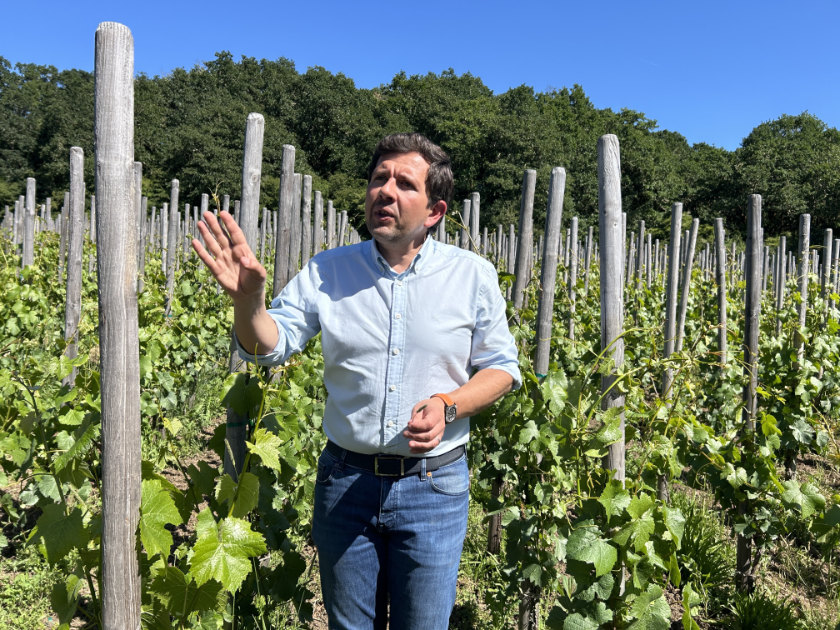
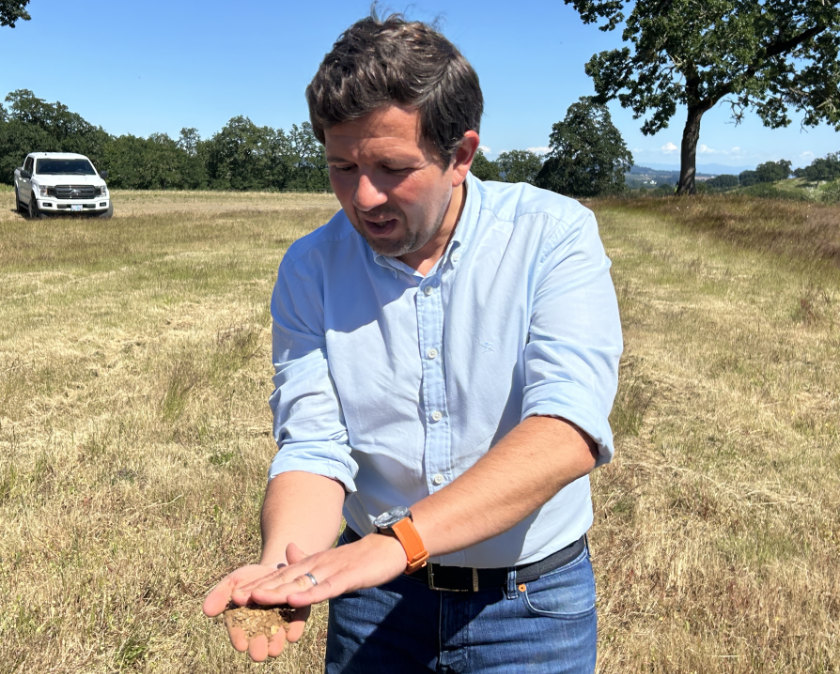
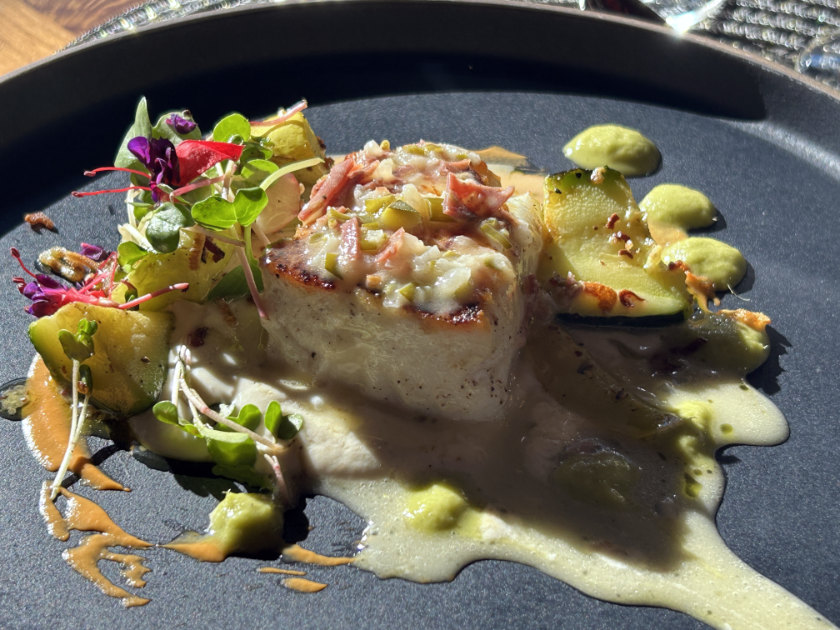
Above, from top: Guillaume Large takes us on a tour of Résonance’s vineyards. A fish-based main course served at Resonance Winery for private dining.
Related articles hand-picked by our editors
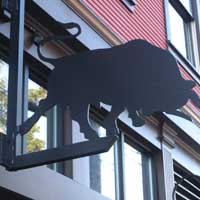 ¡Cena spectacular!
¡Cena spectacular!
Stanley Moss visits a Spanish-themed eatery in the ever-popular Northeast district of Portland, Or., Toro Bravo, helmed by one of the city’s most memorable chefs
Photographed by the author
 Eco-luxe, conjured in the Bay, refined in Portland
Eco-luxe, conjured in the Bay, refined in Portland
Former fashion model and budding designer, Courtney Leonard, has no hidden agenda when it comes to conveying her love for luxury goods and the environment
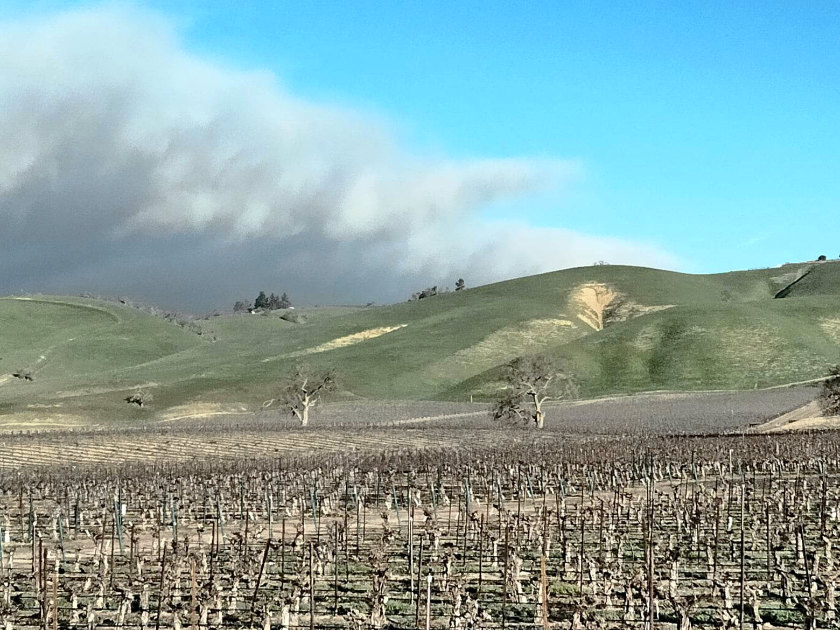
Letter from California: Paso Robles
Paso Robles has become a bustling wine-growing area with 300 wineries. Stanley Moss finds a certified sustainable vineyard and one of the first biodynamic châteaux there, Cass Winery
Photographed by the author